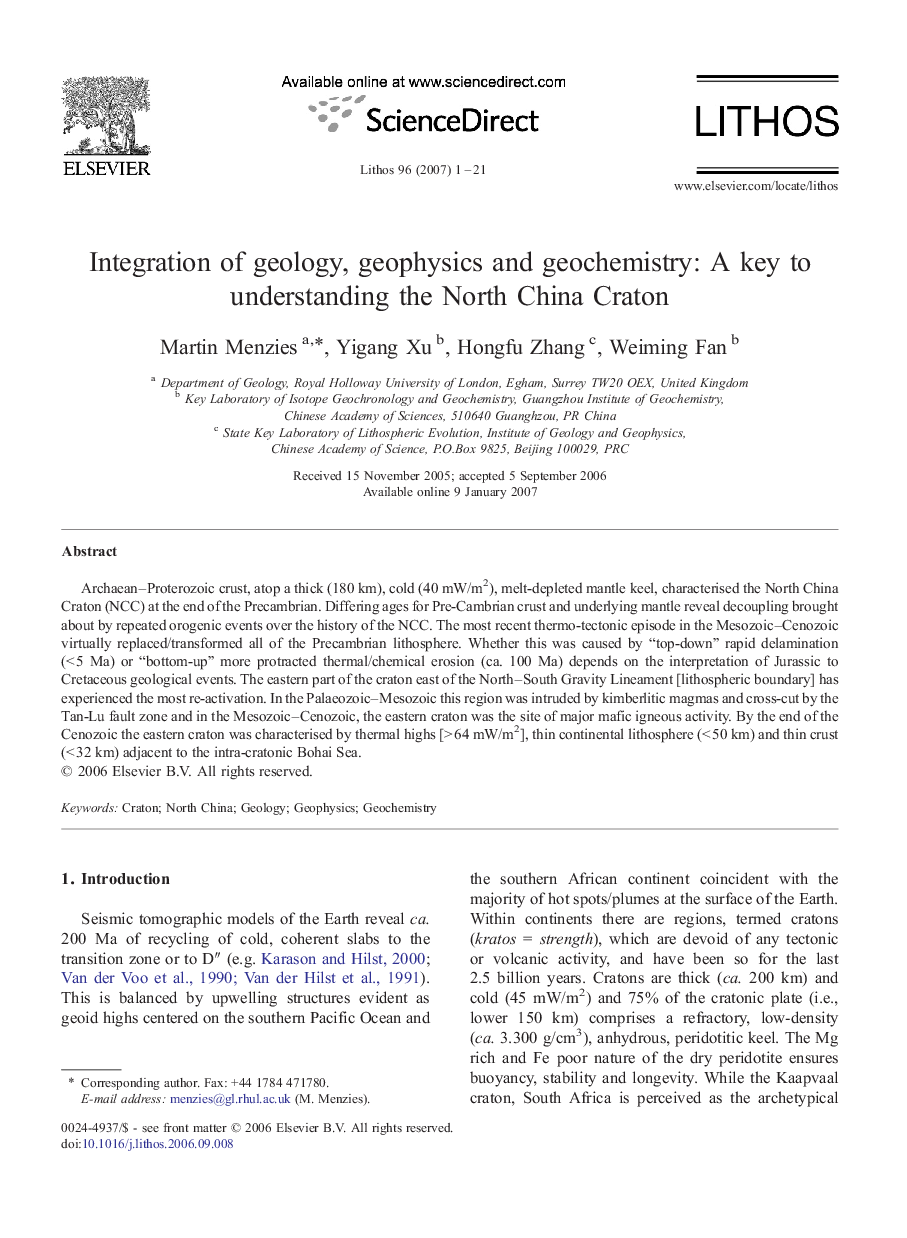| کد مقاله | کد نشریه | سال انتشار | مقاله انگلیسی | نسخه تمام متن |
|---|---|---|---|---|
| 4717744 | 1638768 | 2007 | 21 صفحه PDF | دانلود رایگان |

Archaean–Proterozoic crust, atop a thick (180 km), cold (40 mW/m2), melt-depleted mantle keel, characterised the North China Craton (NCC) at the end of the Precambrian. Differing ages for Pre-Cambrian crust and underlying mantle reveal decoupling brought about by repeated orogenic events over the history of the NCC. The most recent thermo-tectonic episode in the Mesozoic–Cenozoic virtually replaced/transformed all of the Precambrian lithosphere. Whether this was caused by “top-down” rapid delamination (< 5 Ma) or “bottom-up” more protracted thermal/chemical erosion (ca. 100 Ma) depends on the interpretation of Jurassic to Cretaceous geological events. The eastern part of the craton east of the North–South Gravity Lineament [lithospheric boundary] has experienced the most re-activation. In the Palaeozoic–Mesozoic this region was intruded by kimberlitic magmas and cross-cut by the Tan-Lu fault zone and in the Mesozoic–Cenozoic, the eastern craton was the site of major mafic igneous activity. By the end of the Cenozoic the eastern craton was characterised by thermal highs [> 64 mW/m2], thin continental lithosphere (< 50 km) and thin crust (< 32 km) adjacent to the intra-cratonic Bohai Sea.
Journal: Lithos - Volume 96, Issues 1–2, June 2007, Pages 1–21